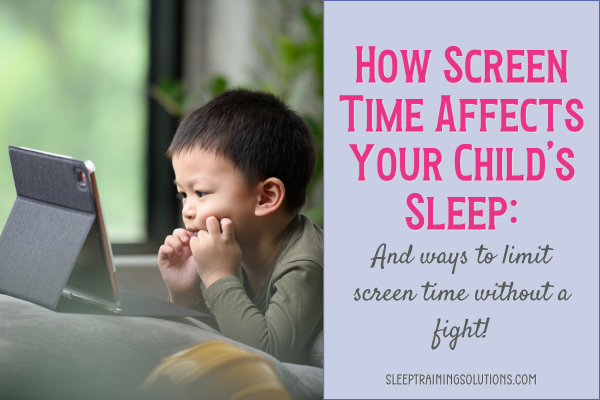Love Languages: The key to successful sleep training for preschoolers and older children
Have you tried charts as a reward – with sleep training, potty training, etc. – and they haven’t really worked or changed the behavior?
When I work with clients with older children, part of the consultation centers around rewards/consequences. I offer several ideas that my clients have been successful with in the past and we narrow it down to one that will work best.
What I recently realized was that I was trying to hone in on the child’s love language, so the parent could better connect with the child during sleep training!
(If you haven’t heard of the 5 love languages for children, you can check it out here!)
When you have an idea of what your child’s love language is (and they could have more than one, but there’s usually one that’s primary) and speak their love language, it helps you be a better parent to your child – building a strong foundation of trust and unconditional love and modeling/teaching/nurturing the right behaviors and correcting the behaviors that need to be changed.
Once you’ve become acquainted with the premise of the 5 love languages, you’ll also see how this can be beneficial during sleep training for older kids!
Here are the 5 love languages and ideas of how to incorporate each during sleep training:
Words of Affirmation
–> showing affection, praise, encouragement and empathy through words
If your child’s primary love language is Words of Affirmation, then talk about how you believe she’ll successful with the new bedtime routine tonight. Say you really care about her and you’re going to help learn how to fall asleep more easily/get the right amount of sleep.
When you have a “win” with sleep training, praise her and tell her how proud you are that she’s doing such a great job learning a new skill! I would even enlist the help of relatives – Facetime with a favorite aunt or grandparent to add to the encouragement and excitement (text them prior to tell them the situation and that your child needs an extra dose of praise on a specific sleep accomplishment)!
Acts of Service
–> showing you’re partnered with your child, helping them with whatever they need
If this is one of your child’s love languages, then using action words like “I’ll help” communicate love. I’ll help you clean up your toys before we go up to the bath. I’ll help you arrange your stuffed animals on your shelf. It can also be doing something special for your child – making a favorite dinner (that you don’t make often because it’s time consuming) or doing a project with them (helping build that diorama or fixing their bike chain).
During sleep training, it’s important that your child knows you’re “on the same side” and want him to be successful. Saying I’m going to help you learn how to fall asleep without needing me to lie down with you (hold your hand, tickle your back, etc) and we’re going to do this together means a lot to a child with this love language.
Gifts
–> giving and receiving gifts
Does your child seem to make gifts for you at every opportunity? Do her eyes light up when you give her a gift? If your child’s primary love language is Gifts, you’ll use rewards for sleep training.
One method that works well is to wrap a gift that you know your child will love and put it up high on the mantel (or somewhere your child will see regularly but can’t reach!) and talk about how she can open it when she meets all of her sleep goals. Another idea is to have a “Good Job” bin where you have a bunch of small little things wrapped and put in a basket/box and each time your child makes progress or meet a specific goal (cooperates for the first time with the new bedtime routine or stays quietly in bed until the clock says it’s morning), she can pick one the next morning. You can also ask her three things she’d like to do the following day (make muffins, go to a favorite park, etc) and if she meets the expectations for the sleep skill you’re working on, she gets each one the next day! (This can also be incorporate with consequences in that she’ll lose one each time she comes out of her room, etc.)
Physical Touch
–> using body language and touch to express love
Does your child love to sit on your lap, give you constant hugs, and want to hold hands? His primary love language is likely Physical Touch.
During the day, you’ll want to offer lots of kisses and hugs, pats on the back, holding hands on walks, cuddling on the couch watching his favorite show, etc. Make sure to focus on this outside of the bedtime/night time environment – we don’t want hand holding, lying down with your child, letting him cuddle in your bed when he comes into your room in the middle of the night!
Quality Time
–> uninterrupted, 1-1 time
You can incorporate this into the bedtime routine (this blog post gives an example of how to do this effectively!) but I also suggest carving out time during the day – every day, if possible- where you and your child spend 15 minutes doing something she suggests. No cell phone in your hand, no tv in the background, and no side conversations with your spouse about dinner or work! It’s also important to do this without siblings – this is 1-1 time with one child.
I just want to emphasize that whatever your child’s love language is, try to incorporate it into your daily routine, not at bedtime and the middle of the night!
Related Posts:
This post is for informational purposes only and may not be the best fit for you, your child and/or your personal situation. It shall not be construed as medical advice. The information and education provided here is not intended or implied to supplement or replace professional medical treatment, advice, and/or diagnosis. Always check with your child’s physician or medical professional before trying or implementing any information read here.





